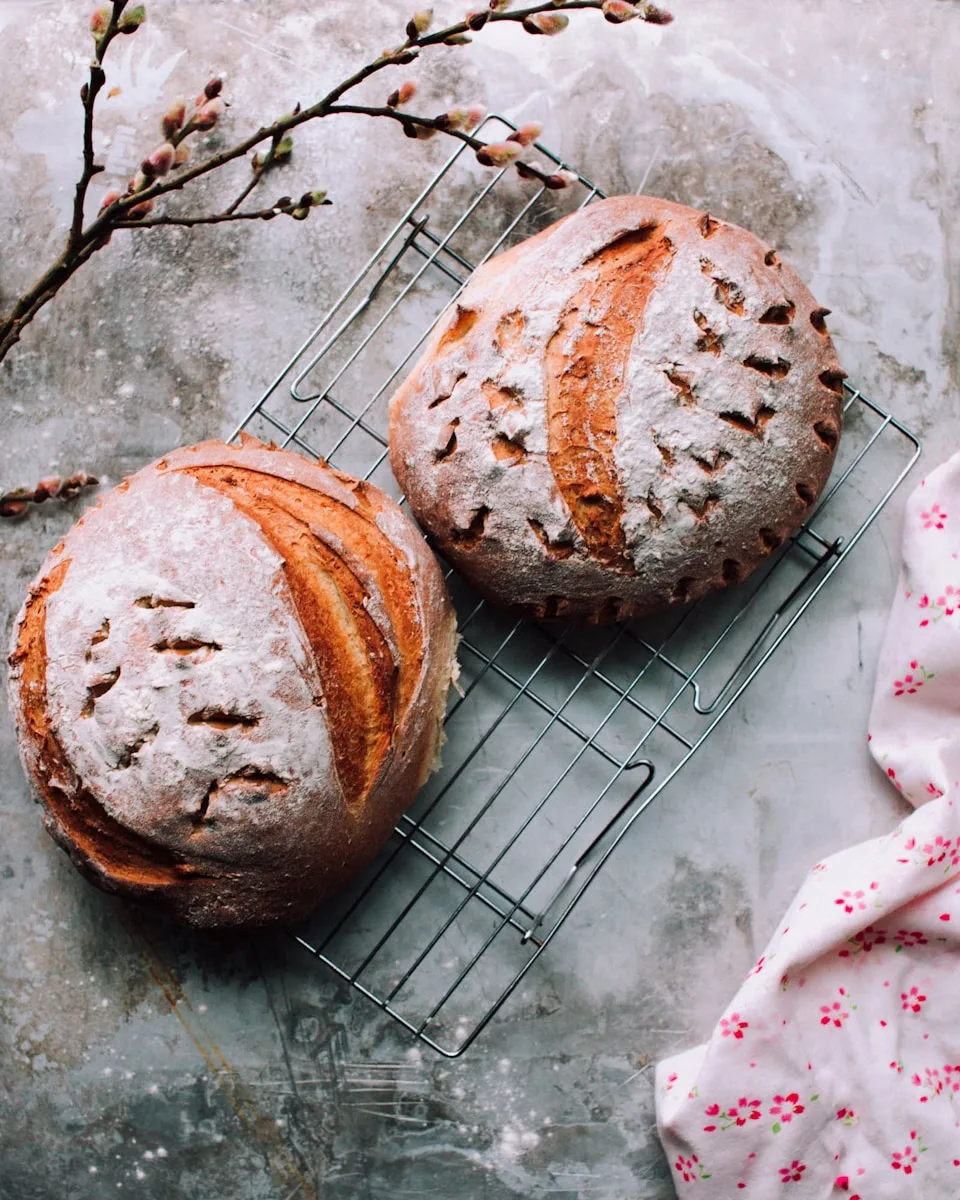The Comprehensive Guide to Low GI Bread: Benefits, Recipes, and Tips
In the pursuit of healthier eating, ** low-GI bread** has emerged as a well-known desire for those searching to maintain solid blood sugar ranges and aid commonplace well-being. This guide delves into the myriad blessings of low-GI bread, offers scrumptious recipes, and offers sensible tips for including it in your eating regimen.
What is Low GI Bread?
“Glycemic Index (GI)” is a score system for carbohydrates based totally on their immediate impact on blood glucose tiers. Foods with a low GI (fifty-five or much less) are digested and absorbed more slowly, main to a sluggish rise in blood sugar and insulin stages. Low-GI bread is made from materials that have a lower impact on blood sugar ranges than everyday bread.
Benefits of Low GI Bread
1. Stable Blood Sugar Levels
One of the huge blessings of low GI bread is its capacity to assist in maintaining **strong blood sugar degrees**. This is mainly useful for people with diabetes or the ones liable to growing diabetes. By preventing spikes and crashes in blood sugar, low GI bread enables managing starvation and lowering the risk of overeating.
2. Sustained Energy Levels
Since low GI bread gives a consistent launch of glucose into the bloodstream, it ensures “sustained energy degrees” throughout the day. This can decorate physical typical overall performance and intellectual alertness, making it an incredible desire for athletes and busy experts.
3. Weight Management
Low GI ingredients, which include low GI bread, can be a useful resource in **weight control**. The slow digestion and absorption gadget assist in feeling fuller for longer periods, reducing the overall calorie consumption. This can be mainly beneficial for the ones seeking to lose or hold weight.
4. Improved Heart Health
Consuming low-GI bread can contribute to “improved coronary coronary coronary heart health”. It often contains higher quantities of entire grains and fibers, which may be regarded as lower levels of cholesterol and reduce the danger of coronary coronary heart illness.
5. Better Digestive Health
The immoderate fiber content material in plenty of low GI bread promotes “higher digestive fitness.” Fiber aids in everyday bowel movements and can save you from constipation. It furthermore allows a healthful intestine microbiome.
Ingredients in Low-GI Bread
Fine elements are favored for making low-GI bread due to their low glycemic index. Here are some commonly used components:
Whole Grains: Whole wheat, barley, oats, and rye are first-rate alternatives.
Seeds: Flaxseeds, chia seeds, and sunflower seeds add each vitamin and texture.
Nuts: Almonds, walnuts, and other nuts may be protected for delivered taste and fitness advantages.
Legumes: Chickpea flour and lentil flour are cutting-edge additions that decrease the GI of bread.
Vegetables: Incorporating veggies like zucchini or carrots can boost the fiber content material cloth.
Delicious Low GI Bread Recipes
1. Classic Whole Wheat Low GI Bread
Ingredients:
– 3 cups complete wheat flour
– 1 cup oats
– 2 tablespoons flaxseeds
– 1 tablespoon honey
– 2 teaspoons yeast
– 1 ½ cups warmness water
– 1 teaspoon salt
Instructions:
1. Mix the warm water and honey in a bowl, then add the yeast and allow it to sit down for 5-10 minutes till frothy.
2. In a large mixing bowl, integrate the whole wheat flour, oats, flaxseeds, and salt.
3. Pour the yeast combination into the dry factors and knead till a clean dough paperwork.
4. Let the dough upward thrust for about 1 hour in a warm region.
5. Preheat the oven to 375°F (100 90°C).
6. Shape the dough right into a loaf and vicinity it in a greased loaf pan.
7. Bake for 30-35 minutes until golden brown.
8. Allow the bread to kick back in advance rather than lowering.
2. Seeded Multigrain Low GI Bread
Ingredients:
– 2 cups complete wheat flour
– 1 cup rye flour
– ½ cup rolled oats
– ¼ cup chia seeds
– ¼ cup sunflower seeds
– 2 tablespoons pumpkin seeds
– 1 tablespoon molasses
– 2 teaspoons yeast
– 1 ½ cups warmness water
– 1 teaspoon salt
Instructions:
1. Combine the first-class and comfortable water and molasses, then upload the yeast and allow it to prompt for five-10 minutes.
2. In a blending bowl, combine all dry substances: complete wheat flour, rye flour, oats, chia seeds, sunflower seeds, pumpkin seeds, and salt.
3. Pour the yeast combination into the dry components and blend till a dough bureaucracy.
4. Knead the dough for approximately 10 minutes till clean and elastic.
5. Let the dough rise in a warm area for approximately 1 hour.
6. Preheat the oven to 375°F (a hundred ninety°C).
7. Shape the dough right into a loaf and region it in a greased loaf pan.
8. Bake for 35-forty minutes till the bread is completely cooked and has a hollow sound even as tapped.
9. Cool the bread before reducing.
Tips for Incorporating Low-GI Bread into Your Diet
1. Start Your Day Right
Begin your day with a slice of low-GI bread crowned with avocado, a poached egg, or some nut butter. This offers a balanced blend of proteins, healthful fat, and carbohydrates to kickstart your metabolism and keep you entire until lunch.
2. Smart Sandwich Choices
Use low-GI bread on your sandwiches. Fill them with lean proteins which encompass turkey or hen, hundreds of veggies, and a healthful unfold like hummus. This makes for a nutritious and captivating meal.
3. Pair with Healthy Sides
When having low-GI bread as a part of a meal, pair it with low-GI components which include salads, steamed vegetables, or a bowl of soup. This maintains the general GI of your meal low and complements its dietary profile.
4. Experiment with Toppings
Experiment with various healthful toppings for your low-GI bread. Try mixtures like cottage cheese and tomatoes, smoked salmon and cucumber, or almond butter with banana slices.
5. Bake Your Bread
Consider baking your personal low GI bread at home. This lets you manipulate the elements and ensure the bread is as wholesome as possible. Plus, freshly baked bread is usually a satisfaction.
Expanding Your Low GI Bread Options
Exploring the numerous varieties of low GI bread options can add variety and excitement to your food regimen. Specialty shops and bakeries regularly supply specific blends that consist of historic grains like spelled, teff, and amaranth. These grains no longer only provide a lower glycemic index but moreover offer a richer nutrient profile, together with critical amino acids, nutrients, and minerals. Incorporating these historic grains into your bread choice can decorate the taste and dietary rate of your food.
The Role of Fermentation in Low GI Bread
Fermentation is a critical tool for making low GI bread. Sourdough bread, for example, undergoes a natural fermentation way that breaks down carbohydrates and lowers the glycemic index. The useful bacteria and yeast observed in sourdough starters moreover contribute to better gut fitness through the manner of selling a balanced microbiome. Including fermented breads like sourdough on your food regimen can as a consequence provide twin advantages of decreased GI and progressed digestive health.
Low GI Bread in Different Cultures
Different cultures across the arena have their private versions of low-GI bread. In Mediterranean areas, for instance, bread crafted from barley or chickpea flour is not unusual. These breads aren’t only low in glycemic index but are also wealthy in fiber and protein. Exploring global low GI bread recipes may be an adorable culinary journey, such as range for your diet plan and supporting you find out new flavors and textures that aid your fitness desires.
Low GI Bread and Exercise Performance
Athletes and health lovers can substantially gain from incorporating low-GI bread into their weight-reduction plan. The normal release of glucose presents a reliable source of electricity for extended physical interest. Consuming low-GI bread earlier than exercising workouts can beautify persistence, at the same time submit-exercising intake can benefit and aid in green recovery by preserving stable blood sugar stages and replenishing glycogen shops. Pairing low-GI bread with protein-wealthy toppings can further optimize muscle restoration and growth.
Innovative Uses for Low GI Bread
Low GI bread is versatile and can be utilized in cutting-edge techniques past the normal sandwich or toast. Consider making low-GI bread crumbs for coating baked fowl or fish, or using it as a base for wholesome French toast. You can also create scrumptious and nutritious croutons for salads or soups. These creative uses are now not the handiest upload range for your meals however furthermore make certain that you are continuously incorporating low GI alternatives into your eating regimen.
Addressing Common Misconceptions
There are several misconceptions approximately low-GI bread that need to be addressed. Some people accept as true that low GI bread lacks taste or texture, but that may be an approach from the truth. With the proper factors and preparation strategies, low GI bread may be virtually as scrumptious and exciting as each one-of-a-kind type of bread. Additionally, it’s a myth that low-GI bread is only for people with diabetes. Every person can enjoy the robust energy and health benefits it gives.
Choosing the Best Low-GI Bread
Bread, it’s miles vital to take a look at labels and understand what makes bread low GI. Look for bread made with entire grains, seeds, and legumes, and avoid humans with excessive stages of diffused sugars and flours. Visiting nearby bakeries that specialize in artisan or fitness-centered breads additionally can be an extremely good way to find wonderful low GI options. Additionally, trying particular producers and recipes at domestic assist you to discover the nice low GI bread that fits your taste and nutritional dreams.
Conclusion
“Low GI bread” offers numerous health blessings, from stabilizing blood sugar stages to selling coronary heart and digestive fitness. By deciding on components as they should be and incorporating low-GI bread into your everyday food, you can enjoy those advantages even as relishing scrumptious and nutritious bread. Try our recipes and tips to make low GI bread a staple on your healthy eating plan, and enjoy the tremendous impact on your general fitness.
Frequently Asked Questions (FAQs)
1. What is the Glycemic Index (GI) of low-GI bread?
Low-GI bread normally has a glycemic index of fifty 5 or less. This method motivates a slower and reduced rise in blood glucose tiers in contrast to high GI components.
2. Is low-GI bread appropriate for diabetics?
Yes, low-GI bread is especially useful for diabetics as it allows them to manipulate their blood sugar levels. However, it’s always best to visit a healthcare business for personalized advice.
3. Can I make low-GI bread at home?
Absolutely! Making low-GI bread at home lets you control the substances and make sure they fit your nutritional dreams. There are many recipes available that use whole grains, seeds, and legumes to achieve a low glycemic index.
4. How does low GI bread help with weight manipulation?
Low GI bread enables weight control by offering sustained strength and keeping you full for longer durations. This reduces the chance of overeating and allows keep a healthy calorie consumption.
5. What factors need to be searched for in low-GI bread?
Look for substances together with entire grains (like whole wheat, barley, oats), seeds (flaxseeds, chia seeds), nuts, and legumes (chickpea flour, lentil flour). Avoid breads with immoderate ranges of sensitive sugars and flour.
6. Can kids devour low-GI bread?
Yes, children can benefit from eating low-GI bread as a part of a balanced weight loss program. It gives constant power and allows trendy health. However, make sure it suits their dietary options and nutritional goals.
7. Is low GI bread flavor extraordinary compared to ordinary bread?
Because it uses whole grains and seeds, low-GI bread can have a fantastic taste and texture compared to normal bread. However, many humans discover it as scrumptious and satisfying.
8. Is sourdough bread considered low GI?
Sourdough bread can be low GI because of its fermentation system, which breaks down carbohydrates and lowers the glycemic index. However, the GI can vary totally depending on the substances used.















Post Comment